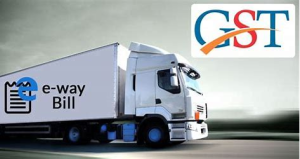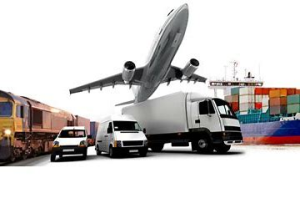The complex goods movement ecosystem in India, encompassing manufacturers, transporters, distributors, retailers, and end consumers, requires robust documentation practices for frictionless flow. E-way bills have emerged as pivotal permits enabling track and trace of consignments in this vast network. However, merely possessing e-way bills is not enough. Various supplementary invoices, declarations, and identity papers are equally critical for unhindered transportation.
In this extensive guide, we simplify these documentation requirements for e-way bill consignments and provide a ready checklist of essential papers transporters must carry. We also analyze specific needs across key sectors, document management best practices, and ways to enhance compliance.
Understanding the E-way Bill Framework

Before examining the documentation necessities, it is important to briefly comprehend what e-way bills entail, the key purposes they serve, and the scenarios warranting their generation.
What is an e-way bill?
E-way bills are essentially electronic permits generated on the common GST portal for the transportation of goods worth over Rs. 50,000 within or between states. They contain consignment details like item descriptions, invoice values, HSN codes, recipient particulars, transporter specifics, etc.
Key Objectives of E-Way Bills
- Enable real-time tracking of intra- and inter-state goods movement.
- Curb tax evasion by unscrupulous entities in logistics
- Boost efficiency for transporters through faster clearances.
- Reduce freight transit times across state borders.
Goods Transportation Scenarios Requiring E-way Bills
- Business-to-business (B2B) transactions
- Movements for job workers
- Transfer of goods to warehouses
- Returns, repairs, and export shipments
- Inward supply from unregistered dealers
With the foundation established, we analyze the accompanying documentation requirements.
Also Read: What is an e-way bill?
Building a Comprehensive E-Way Bill Document Checklist
In addition to e-way bill availability in physical or electronic form, certain supplementary papers are mandated during goods transit as per Rule 138A of the CGST Act. We built an exhaustive checklist:
Table 1: Comprehensive Documentation Checklist
| Documentation Type | Key Documents |
| Tax Invoices | Tax Invoice, Bill of Supply, and Delivery Challan |
| Transporter Identity | Goods Receipt Number and Transporter ID |
| Vehicle Information | Registration Certificate and Fitness Certificate |
| Permits | State/National Permits, Customs Bond License |
| Other Declarations | Job Work Challans, Export Declarations |
However, it must be noted that specific documentation necessities vary across different goods movement cases on the basis of special exemptions or requirements applicable.
Also Read: Comprehensive Transport Documents: The Backbone of Smooth and Compliant Goods Movement
Essential Papers: Common Scenarios and Specifics
While certain documents, like tax invoices, are generally applicable, supplementary needs differ based on movement situations. We explain document specifics across some common scenarios:
-
Business-to Business (B2B):
- Tax invoices are mandatory, mentioning the GSTINs of the supplier and recipient.
- Delivery Challan, optionally carrying invoice details
- E-way bill with vehicle number if moved by road
-
Business to Customer (B2C):
- Retail invoices without GSTINs
- Itemized Delivery Challan
- E-way Bill with vehicle and transporter specifics
-
Export Shipments:
- Shipping Bill Invoice
- EXIM procurement certificates
- Transporter ID proof
-
Job Work:
- Job Work Challans with HSN Codes
- Authorization certificates
- Work order copies specifying process details
Therefore, while tax invoices may suffice in certain B2B cases, additional procedural papers are vital for export logistics, for instance.
Also Read: How Do I Generate an E-Waybill for Job Work?
Legal Requisites Around Documentation

With heavy penalties applicable under Section 126 of the CGST Act 2017 for tax evasion and documentation lapses during transit, it is imperative to understand the statutory guidelines around paperwork:
- Prescribed Documents Only: Transporters must refrain from carrying additional arbitrary invoices, noting, markings, etc. not specified under Rules 55A and 138A to avoid misinterpretations.
- Requisite Information Availability: Papers must mandatorily contain prescribed specifics like GSTIN, exact item details, invoice numbers, vehicle particulars, etc., facilitating seamless verification.
- Authenticity Mandate: All documents provided must be duly signed or authenticated through e-signatures by partner GSTIN holders, highlighting consent.
Strict adherence assumes paramount importance, considering the legal repercussions.
Want to know about the key components and legal requirements for the e-way bill? Then you need to click on this blog post by Captainbiz.
Industry-Specific Insights into Documentation
While standard tax invoices often suffice for general goods transportation, specialized commodities warrant tailored documents containing supplementary shipment-specific declarations. We explain for two key sectors:
- Automotive: Accompanying paperwork like Vehicles Registration Certificates, ARAI certificates, and insurance paperwork is mandated alongside regular invoices for used vehicle sales, linking transfers between states.
- Pharmaceuticals: Extensive narcotic drug regulatory clearances from CDSCO, import permits, excise attestation, and chemical analysis reports must supplement medicine consignment invoices.
Therefore, understanding sector-specific documentation helps transporters carry the right papers, eliminating legal hassles. Trade bodies and logistics associations also play a key role in building awareness.
Addressing Challenges in Compiling Documents
However, the process of aggregating essential paperwork, particularly involving multiple stakeholders, often suffers from adversities like:
- Document Availability Issues: Procurement invoices, work orders, etc. may be internally unavailable, with consignors delaying shipments.
- Information Asymmetry: Details like accurate vehicle numbers and transporter IDs tend to be dynamically updated post-invoice generation, hindering information flow.
- Stakeholder Coordination Setbacks: Supplementary certificates and declarations often await approval from external stakeholders, causing delays.
Proactive mitigation steps to address these documentation delays across goods movement touchpoints are vital for transporter compliance.
Table 2: Documentation Challenges and Mitigation Strategies
| Challenge | Key Mitigation Steps |
| Non Availability | Digitized Document Retention Policies |
| Asymmetry | Real-time information sharing mandates |
| Lack of coordination | Standard Declaration Forms for Stakeholders |
Therefore, collective diligence by enterprises can smooth processes.
Enabling Continuous Improvement in Documentation Compliance
One-time system improvements for maintaining updated paperwork rarely bring sustainable efficiency at an industry level. Structural mechanisms by transport associations, industrial bodies, and government authorities are pivotal, involving:
-
Periodic Knowledge Updates:
Periodic knowledge updates are essential to keep transporters informed of changing requirements. Their associations can conduct regular workshops and sensitization sessions outlining additions or modifications to documentation protocols for e-way bills and other goods transit permits. Email advisories and notifications around evolving paperwork norms relevant to different sectors also foster updated understanding.
-
IT Infrastructure Upgrades:
Upgrading IT infrastructure offers game-changing compliance dividends through common digital platforms. These integrated systems provide inventory visibility across the supply chain, digitize documentation workflows for approvals and storage, and enable certificates and declarations on the cloud to be accessible to authorized partners. Features like automated alerts on pending documentation submissions and dashboards highlighting documentation lapses allow transporters to take timely corrective actions.
-
Standardized Declaration Forms:
Standardized declaration forms pre-approved by regulatory authorities also smooth processes. Predefined information fields catering to job work challans and other joint documentation between companies, with digitized submission workflows, enhance inter-company coordination. The Confederation of Indian Industry (CII) and other bodies can foster the adoption of such standardized templates across industry verticals.
-
Regulatory Feedback Channels:
Finally, formal feedback channels for transporters to submit suggestions around improving documentation frameworks assist authorities in boosting last-mile connectivity. Metrics capturing efficiency parameters allow GSTN and other agencies to quantify improvements and bolster self-regulation.
Proactive Measures for Businesses to Streamline Documentation

While larger systemic interventions are imperative over the long term, discrete initiatives by transport companies around maintaining paperwork can enhance legal preparedness.
-
Digitized Document Checklists:
Digitized document checklists that truckers can readily access, outlining sector- or product-specific papers required, aid in compliance. Features like checkbox selections indicating documents collected, along with reminder alerts on pending items, sharpen adherence.
-
Invoice Digitization:
Electronic invoices shared well in advance with e-sign approvals by partner stakeholders prevent last-minute unavailability issues. Built-in buffers accommodating external party delays also help.
-
Vehicle Information Access:
An enterprise dashboard displaying real-time updates around attached truck, trailer, and driver permits aids in readiness by eliminating asymmetric paperwork. The automatic daily upload of vehicle fitness certificates and insurance papers provides updated visibility.
-
Random Inspection Drills:
Random inspection drills verify documentation adherence among truckers. Executives can conduct surprise checks at warehouses or midway, selecting a few trucks and matching papers against goods carried. Such internal enforcement tightens processes.
Internalizing documentation consistency as a key priority provides demonstrated compliance benefits.
Best Practices for Efficient Document Management
As custodians of goods in transit with direct statutory liability, transport companies stand to gain tremendously by emulating efficient documentation frameworks widely validated across the industry:
- Automating Workflow Approvals: Systems that trigger instant email intimations to actioning authorities seeking approvals on job work challans prevent delays.
- Information Centralization: Common portals maintaining eventual documentation data associated with items, vehicles, and parts boost availability.
- Unified Documents Interface: Simple document allocation screens in trucks where drivers assign papers like invoices and permits to specific items and components eliminate scrambling.
- Barcode Enabled Sorting: Scanner systems accurately sorting submitted papers as per goods categories, vehicle numbers, etc. enhances structure.
As market complexities evolve, scaling these proven documentation management practices offers sustained advantages.
Staying Updated on Changing Document Compliance Norms
With GST authorities continually introducing new documentation guidelines or modifying requisites for transportation permits through notifications and circulars, active tracking assumes tremendous significance.
Some recommendations for transport associations and large freight companies:
- Set Expert Teams: Maintain centralized teams of compliance specialists updated on the latest documentation protocols for e-way bills and allied transport permits.
- Formal Update Bulletins: Circulate periodic formal circulars and newsletters to all truckers highlighting changes to the documentation frameworks mandated for goods transit.
- Portal Dashboards: Publish documentation amendment advisories over simple traffic light-coded dashboards classifying risk areas for easy information percolation.
- Assessment Surveys: Conduct periodic self-assessment surveys testing employee awareness of recent documentation compliance policy updates to identify improvement areas.
Bolstering Compliance Levels through Systematic Mechanisms
Transport of goods stretching across multiple days and state borders warrants systematic and fool-proof approaches by enterprises covering the dimensions below to sustain compliance:
- Document Compliance Leaders: Nominated oversight authorities providing guidance around documentation needs enhance accountability.
- Standard Policy Manuals: readily available booklets outlining organization-specific documentation protocols aid truckers.
- Digital Information Systems: Integrated IT systems that indicate pending documentation needs well in advance allow a sufficient buffer.
- Inspection Cross-Checks: Random document verification of trucks by authorized evaluators identifies gaps.
Therefore, ingraining documentation consistency into operational DNA is pivotal.
Conclusion
Smooth movement of goods in India’s complex logistics environment is vital for economy-wide progress. E-way Bill permits undoubtedly enable cargo tracking but require adequate documentation support for holistic compliance. Our comprehensive guidelines outlining the various documents transporters must mandatorily possess based on goods profiles and associated generation challenges can help streamline logistics.
With freight volumes set to expand in the coming years, it is also imperative that policy measures by authorities as well as internal interventions by transporters continually endeavor towards greater self-regulation by proactively mitigating the risks of documentation roadblocks stalling crucial supply lines. Getting the basics of documentation right can save on the massive waste and inefficiency currently prevailing in the system.
Frequently Asked Questions
-
What documents does a transporter need to carry along with the E-way bill?
Some key documents transporters must possess during transit include tax invoices, goods delivery challans, transporter ID proof, vehicle number certificates, job work order letters, etc. Specifications vary as per item type and supply scenarios.
-
What documents suffice for any general goods transportation on highways?
For routine freight movement, a basic tax invoice, an e-way bill (physical or e-copy), and proof of vehicle registration should ideally suffice, and no major additional paperwork is generally needed.
-
Do transport companies need any specialized licenses for moving export goods?
Yes, for transporting export goods, specific permissions may be warranted, like customs bond certificates that allow the movement of containers from ICDs to gateway ports. These documents are a must during scrutiny.
-
How are delivery challans useful from a documentation compliance perspective?
Challans provide itemized information on goods being carried beyond what high-level tax invoices capture, proving useful during physical verification by authorities matching truck loads with paperwork specifics.
-
What are the documentary challenges involved in transporting third-party job goods?
Critical elements like work orders having details of the process undertaken may reside with consignors internally. Requisite declarations from job workers specifying goods also require coordination, hampering information flow.
-
What legal consequences can transporters face for documentation non-compliance/discrepancies?
They face detention of goods, hefty tax penalties under CGST Act Section 126 for any information asymmetry between invoices and goods carried, as well as further prosecution provisions for serious offenses.